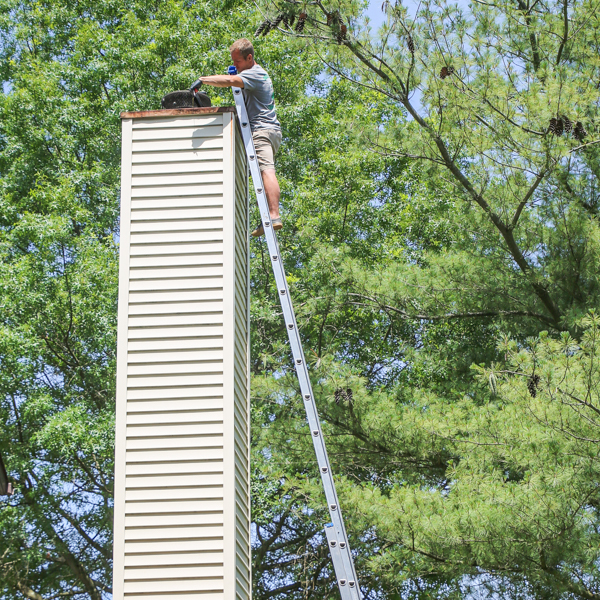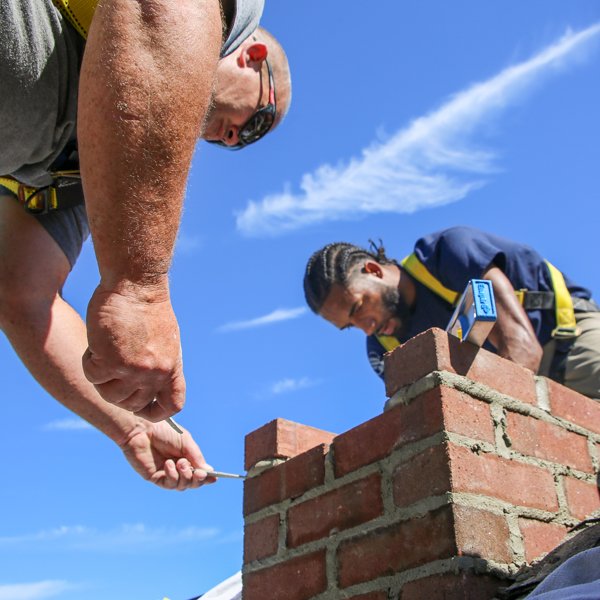Tips to Ensure Your Chimney is Ready for Cold Weather
On a recent trip to the mall, I noticed something I hadn’t seen in quite some time. It was full of shoppers stocking up on winter clothes in preparation for the upcoming cold weather. I wasn’t surprised, though. New Jerseyans know that winters can be long, typically lasting from October until April. So, while you’re getting your family prepared for winter, here are a few tips to prepare your chimney for the cold wintry weather in Mercer County, NJ.
 Chimney Inspection & Cleaning
Chimney Inspection & Cleaning
The first task on the list to ensure your chimney is ready for cold weather is to schedule a chimney inspection and cleaning. The National Fire Protection Association (NFPA) and national fire safety experts encourage all homeowners with gas or wood-burning heating appliances to have an annual chimney inspection. The Certified Chimney Sweep® that performs the top-to-bottom interior/exterior inspection will also advise if chimney cleaning is necessary. A chimney inspection and cleaning will not only ensure your chimney is structurally sound but will also check that the chimney, vents, and attached appliances are free of obstructions and combustible deposits, reducing the risk of fire and carbon monoxide poisoning.
Install a Chimney Cap
The chimney cap is an accessory installed to protect the flue against water damage, but not all homes in western New Jersey have a cap on top. If your chimney cap is damaged or non-existent, precipitation will leak into the fireplace. Water has a damaging effect on chimneys: It weakens the chimney crown and interior masonry, damages the flue liner, and rusts the damper, which can lead to extensive chimney repairs. Moisture also promotes mold, mildew, and bacteria growth that can spread to your attic, ceiling, and walls around the house. When installing a chimney cap, it should have a mesh screen with a spark arrestor, so leaves, debris, small animals, and pests can’t get inside the chimney and cause a dangerous flue obstruction. It will also keep hot embers from landing on the roof or nearby brush.
Trim Overhanging Tree Branches
Tree branches that overhang near the chimney are a fire hazard. To help prepare your chimney for cold weather, tree branches and combustible objects should be at least ten feet away from the chimney.
 Make Masonry Repairs
Make Masonry Repairs
The cold and wet wintry weather that we typically experience in the New Brunswick area will accelerate the brick and mortar’s deterioration if existing masonry damage is not correctly repaired. The biggest threat to the chimney in the winter is the freeze-thaw cycle. This continuous freezing and thawing cause cracks in the water-soaked bricks and decaying mortar to keep expanding in wintry weather conditions. It causes bricks to flake, chip, crack, and eventually separate from the chimney. As a result, you may notice brick and mortar fragments on the ground, missing bricks, and gaps in the mortar joints. Depending on the severity of the condition, a certified chimney technician may use tuckpointing to repair the masonry damage and restore its structural integrity.
Waterproof the Chimney
Once masonry repairs are complete, many chimney professionals recommend applying a water repellant to protect the chimney from future water damage. Homeowners should only use waterproofing agents formulated for masonry chimneys. These water repellants have a 100% vapor-permeable membrane that allows the masonry to breathe. It repels water while allowing any moisture trapped inside to escape. The waterproof sealant will need to be reapplied every 7 to 10 years to remain effective.


